George Psalmanazar, Fake Formosan
In 1703, at the dawn of the eighteenth century, a traveler came to London Town. A native of a far-off land, kidnapped by Catholic missionaries but rescued by a Protestant minister, he was practically tailor-made for the fervently Protestant (and very anti-Catholic) people of London. He had been christened George Psalmanazar by his rescuer and he delighted the people with tales of the exotic customs and barbaric practices in his homeland, far-off Formosa (modern day Taiwan). To them it seemed almost unbelievable; but it would have been even more unbelievable to a modern viewer if they had seen the blonde, blue-eyed Psalmanazar telling these tales.
George Psalmanazar was not born in Formosa, of course. The only source for where he was actually born is his own autobiography, published after his death. If we are to believe him, he was born in the early 1680s somewhere on the road between Avignon and Rome, along the traditional route taken by pilgrims to the Holy City. He could have been born in Cannes or Monaco, but he never gave the exact place. He also chose not to reveal the name he was born under, remaining George Psalmanazar even in death.
George claimed to be from a respectable but impoverished Catholic family, and was given an education at a free religious school. He was intelligent and creative, and swiftly became fluent in Latin. His father had left his family to go and work in Germany for some reason, so he was raised primarily by his mother. He was a good enough student that he was taken with a group of other boys to study at a Jesuit’s college; but he suffered there from being suddenly put into a much more advanced class than he was used to. He still did well enough that he was invited to join the Society and train for the priesthood, but his mother refused to allow this.
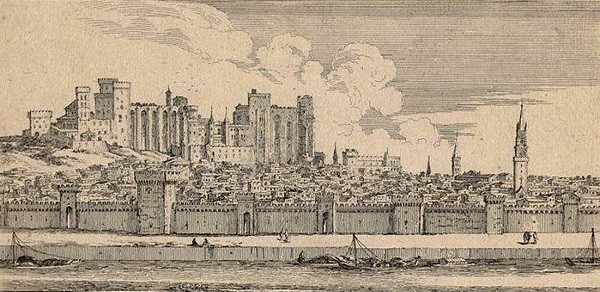
Instead George went to a university operated by the Dominican Order, but he found it not really to his liking. When he sent a complaining letter to his mother she arranged for him to take a holiday in Avignon, where he stayed with a councilor from his home town who was visiting the city. He stayed in Avignon for some time, trying his hand at being a tutor among other things, but eventually fell into poverty. He decided to head home, and that was when he first thought of the scheme that would change his life.
Since his home was on the route pilgrims took to Rome, it occurred to George that he could make his journey in relative comfort if he was able to take advantage of the charity given to those pilgrims. So he lied to the authorities and got himself documents certifying that he was an Irish pilgrim on his way to Rome. To complete his imposture he stole a pilgrim’s cloak and staff from a local church and then headed out on the road.
George did not make for a very convincing Irishman, partly because he did not speak the language and partly because he knew nothing about the country. Still he made enough money begging that he strongly considered traveling on to Rome. He claimed that it was his mother’s idea that he change direction and use his pilgrim’s garb to head north to visit his father in Germany.
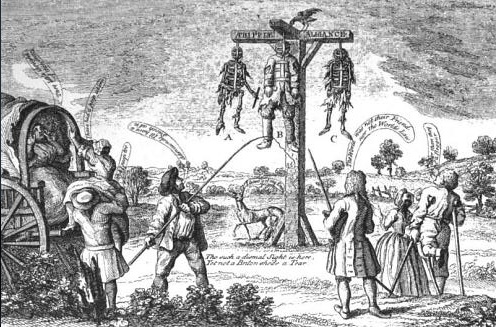
It was a long trek to Germany, and what stuck in George’s mind most from the trip were the corpses of executed criminals he would pass at the crossroads. Most had been executed for preying on travelers, and he also saw monuments to those who had been killed by these bandits. Still he managed to avoid meeting such a fate himself and eventually made it to Germany where, at the age of sixteen, he met his father for the first time in ten years.
It’s unclear exactly what George’s father thought when his son, dressed as a poor pilgrim, suddenly turned up in front of him. George says that his father did try to persuade him to stay in Germany, but he was dubious. Among other things he found that the Latin he had learned in southern France had an accent that was difficult for German-born Latin speakers to understand. In addition though it had been fifty years since the end of the Thirty Years War the country was still recovering from it both economically and mentally. So George decided to continue traveling, and this was where he hit on the scheme that would make him famous.
George’s plan can be summed up pretty simply: pretend to be Japanese. This grew out of his original habit of pretending to be Irish; a plan which had almost come unstuck several times. His solution, he decided, was to pick an island nation much further away. His Jesuit teachers had taught him about the missions to Japan and a rough knowledge of them, including that they had their own writing method. He didn’t know that this consisted of ideograms though, so he invented an alphabet that still followed the 26-character Roman style. After practicing that for a while and inventing a basic language to go with it, he set off.
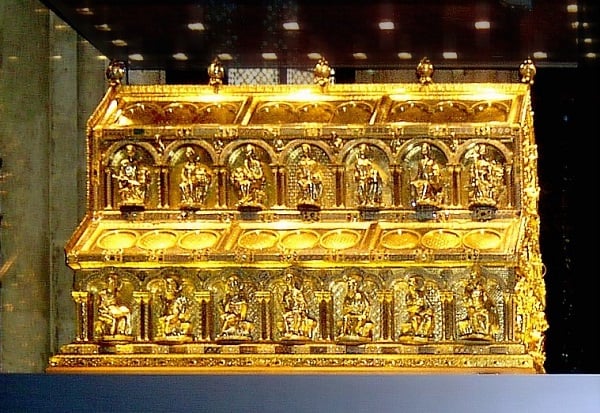
The first destination on George’s itinerary was Cologne, home to the Shrine of the Three Kings. This shrine allegedly contains the bones of the Three Wise Men from the New Testament, sent from Constantinople to Milan by Constantine and then looted from Milan by the Holy Roman Emperor Frederick Barbarossa. Regardless of whether it did contain their genuine remains or not, it was considered the holiest relic in Germany and the prime destination for pilgrims.
George’s new chosen lifestyle as a traveler did come with some risks, despite his disguise. When he crossed the border back into France he was imprisoned as a spy, though he was eventually released. As a result he began to improve on his imposture, inventing customs for himself such as eating raw meat and sleeping upright in a chair. His story was that he had been converted by Jesuit missionaries and traveled back to Europe with them, a semi-plausible story since the only thing most people knew about Japan was that its emperor persecuted Christians. Over the next few years he traveled around most of western Europe under this pretense.
Life on the road proved hard for George, though. He tried (under his “Japanese” disguise) to enlist in the Dutch army; but his recruiting officer decided that he was unfit for service. Instead the officer gave him a job in a coffee-house he owned in Aachen. He hoped that this peculiar “foreigner” might be a curiosity that drew crowds, though this didn’t quite work. This may have been what planted the seed in George’s mind that his false persona could be used for fame.
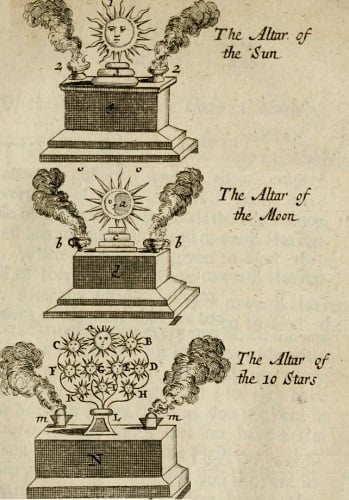
His opportunity to do this came when he was sent away from the coffee-house on an errand to another city. While passing through a town near Cologne he met a man recruiting for the local Count’s army, and he signed up. He still maintained his facade of being “Japanese” throughout his service, which led to him moving through several companies. It was at one of these that he took the name of “Salamanzer”, inspired by the biblical Shalmaneser. He even invented his own “religion” to pass as a heathen, basing it on sun-worship and inventing a language for his prayers. Eventually he wound up in a mercenary company that mixed French and Scottish soldiers, and it was here that he met Alexander Innes.
The commanding officer of the regiment, Brigadier George Lauder, was greatly curious to see this strange foreigner who had joined his troop. (By now George had changed his supposed nationality from Japanese to “Formosan”, to further minimise his chances of being caught out.) Lauder invited George to dine with him at his house, along with several of his officers. One of those was a Scottish chaplain named Alexander Innes. George had a habit of tormenting churchmen through asking “innocent” questions that he (with his own theological training) knew would be difficult to answer. One of those he tweaked was no friend to Alexander, and the Scotsman soon took a liking to him.
Alexander was apparently taken in by George’s “heathen” persona, and decided that to convert such a heathen to Anglicanism and bring him back to London would make him a celebrity. (Or he recognised the fraud and decided to take advantage of it.) He set about trying to convince George that Anglicans were far superior to the Catholic missionaries who had “kidnapped him from his home island”. He mixed this in with gifts of money, enough to convince George to keep coming back to him. When he offered to get George discharged from the regiment and to take him back to London with him, George (who was thoroughly sick of soldiering) accepted.
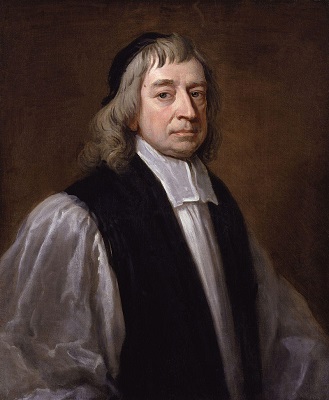
Alexander lost no time in officially inducting his new convert into the Anglican faith. George Lauder agreed to stand as godfather at the baptism, which was why George Psalmanazer took the brigadier’s name as his own. After that, as soon as an official invitation from the Bishop of London arrived, they set off. They passed through Rotterdam, which was the first real test of George’s false nationality now that he had put so much focus on it. His diet of raw meat and vegetables convinced them he was genuine though, and so he and Alexander headed on to London. They arrived at the end of 1703.
George’s newly-minted life story was tailor-made to be sympathetic to the people of London. He claimed to have been kidnapped from Formosa by Jesuits and brought back to Avignon, where they attempted to convert him to Catholicism. When he refused they threatened to turn him over to the Inquisition as a heretic; so he escaped and went on the run. Naturally he had headed to the Protestant part of Europe, where he had found work as a mercenary. In order to put the seal on this, George (who had by now perfected his invented “Formosan”) presented a translation of the Anglican catechism to the bishop as a gift.
The city lapped all of this up, and George soon found himself a celebrity. Of course, he had challengers. He could never admit he was wrong, for starters, and so he was forced to cling to his initial statements that Formosa was a part of the Japanese empire and that it was heavily populated. He also could not admit that it was a sparsely populated Chinese territory, as there had previously been Chinese visitors to London (including a Chinese man named Michael Alphonsius Shen Fu-Tsung twenty years earlier). This controversy led to his being invited to the Royal Society to debate one of those same people he had demonised: a Jesuit missionary named Father Fountenay. Luckily for George his opponent was armed only with the facts, while George had prejudice on his side. He successfully convinced the Society of his bona fides and won himself some powerful patrons.
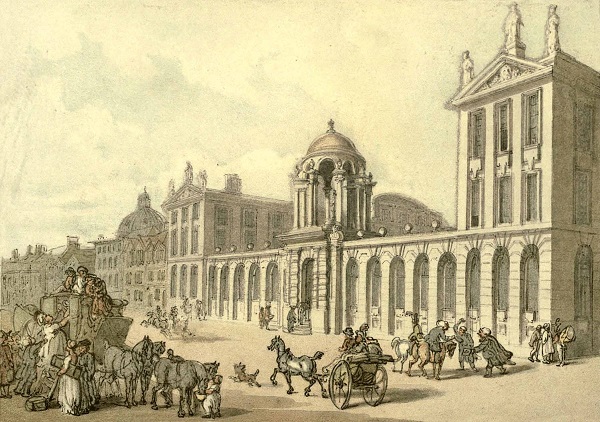
Those patrons sponsored George to spend six months at Oxford, allegedly to teach “Formosan” to prospective missionaries. In fact he spent more time giving lectures on the customs he invented for Formosa, all guaranteed to titillate the audiences. To play this up he put special emphasis on things like cannibalism and human sacrifice. He claimed to have no aversion to eating human flesh, but that he accepted that it would be incredibly rude to do so in Europe. Human flesh was considered a delicacy in Formosa, he told them, because it was illegal to kill someone for food. Instead only those executed or killed in human sacrifice were permitted to be eaten, and their flesh fetched a high price. (Husbands could also eat their wives if they were unfaithful, a salacious detail that went down well with the armchair moralists.)
George elaborated on his Formosa in the book he published that year, An Historical and Geographical Description of Formosa, an Island subject to the Emperor of Japan. In this entirely fictional book, George took inspiration not just from missionary tales of the far east but also stories being brought back from South America by the Conquistadors. It might be from the Xes liberally deployed in the Spanish transliterations of Aztec words, for example, that he decided to named the capital of Formosa “Xternetsa”.
In George’s history of Formosa, it had been an independent kingdom up until recently. (Apart from a brief occupation by the Tartars that had been driven out by rebellion.) He flirted with historical accuracy by mentioning the long-running war the island had with China, but in his telling the Chinese were defeated. Instead the country was conquered by Japan, and specifically by a Chinese man named “Meryaandanoo” who had schemed and murdered his way to the Imperial throne. Through treachery and through abuse of the laws of diplomacy he conquered Formosa, bringing it into the Japanese empire.
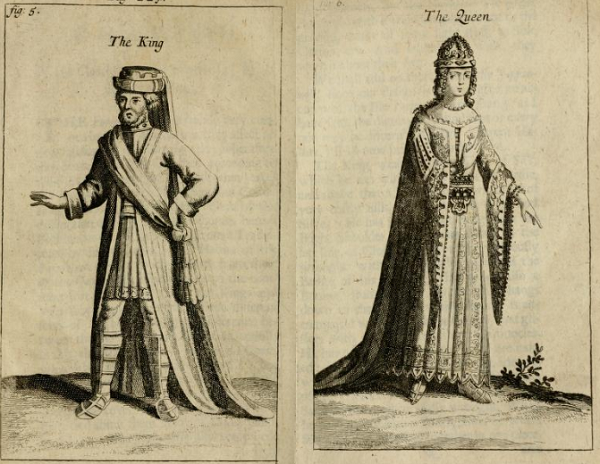
This subject kingdom had harsh laws, and George went into detail on this legal code. Though Christianity was heavily persecuted, many other religions were tolerated. This included a form of atheist reincarnation belief, a worship of idols, and a monotheistic faith which worshiped the sun and stars as messengers of a god too terrifying to worship directly. The main religion though was one where an all-powerful god was honoured through the human sacrifice of children (at the rate of 18000 a year) along with the sacrifice of animals and through prayer. The prophet of this god had been called Psalmanazar, and George claimed to have originally been named for him. (It’s worth noting that the first section of the book was George’s recounting of his own “conversion” to Christianity, along with a bunch of frankly rather banal theological diatribes.)
One interesting tweak in George’s description of the primary Formosan belief was that it offered no guidance as to what happened after death. Their holy book (the “Jarhabadiond”) simply promised “great happiness” after death to those who followed both the religious and civil laws. But as to the details, that was a matter of much philosophical debate. Some advocated reincarnation (with George probably cribbing this from other travelogues), with the ultimate goal of this cycle being to become a star. Souls did penance by passing through the bodies of beasts, with George saying that this was why only beasts who had been sacrificed could be eaten as food. Damned souls either became trapped in “evil beasts” (”Lyons, Wolfs, Tigers, Apes, Cats, Swine, Serpents”) or became ghosts and devils.
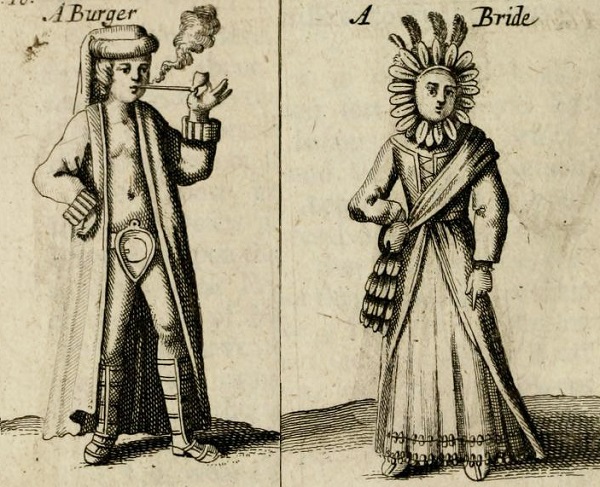
George invented many details of Formosan life, such as that they had wooden hourglasses or that the men and women constantly smoked opium. (George himself had a solid opium habit by now.) He wrote that the women all wore gowns (though the quality varied by class) while the noblemen and the common men wore animal skins, wore kimonos, all gaping open. Their modesty was preserved by posing pouches normally made of metal. The metal was either brass, silver, or gold; depending on the class of the Formosan in question. (The poorest were forced to substitute bark or seashells.) Men wore their hair short and some (but not all) had beards. Married women wore masks while out in public, while widows wore wreaths in their hair.
The human sacrifice that George invented was entirely of young male children, which provided the justification for the polygamy that he said was thus practically required on the island. (Though it could be that he decided he wanted polygamy, and so worked backwards from there to the sacrifice.) Taking a new wife did legally require a means test to ensure that the man could support her, since George’s imagined society was hardly so exotic and bizarre to allow women to work and earn wages. That would have been utterly unacceptable to the staid London audience.
The book concludes by describing the Japanese empire (details of which George stole from other travelogues) and the impact of Westerners on the islands. George happily throws his former Jesuit teachers under the bus, claiming that the persecution of Christianity in Japan (and by extension, “Formosa”) was all down to their “Popish Errors”. The appendix details George’s own travels (persuaded into a pilgrimage to Rome, kidnapped to Avignon and threatened with torture, and then escaping to Germany and becoming a mercenary.)

For all the detail he goes into, though, George’s invented Formosa ultimately rings hollow. There is no depth to his religion, no folklore and wealth of tales for him to draw on. His chapter on “superstitions”, for example, is merely about seeing omens in things while his “wildlife” chapter merely mentions that Formosa is inhabited by a lot of animals that do not breed in England (including camels, wolves, crocodiles and chameleons.) [1] While George is to be commended for his general consistency and attention to detail, his false land still has a tendency to collapse under its own weight if it is looked at too closely.
Despite this, the book was a roaring success. George saw little of the money from this success though, as he had foolishly sold the rights for a flat fee of ten guineas. (This was still a considerable amount of money in 1704, of course.) He received a similar payment the next year for a reprinted edition, and the book was also translated into French and published in Paris. This did lead to some pushback, as it allowed those on the continent who were slandered in the appendix to read what George had written and to complain about it.
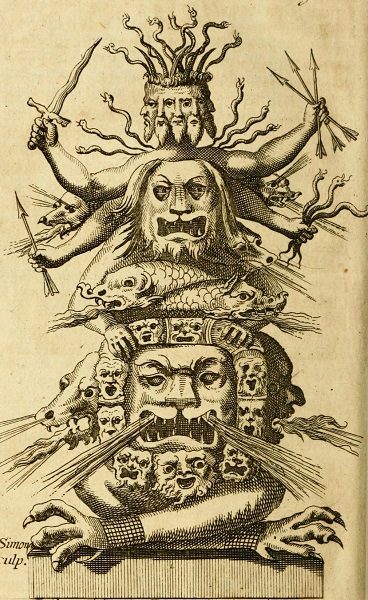
This was symptomatic of the turning mood against George, as more and more cracks began to appear in his facade. Alexander Innes (who George claimed had become complicit in his fraud) secured a post as personal chaplain to Henri de Massue, Earl of Galway. Henri was a retired military officer but in 1704 he was appointed to lead the allied forces fighting in Portugal against , and Alexander went with him. George was thus deprived of a key confidante who could help him paper over those cracks.
By 1706 George was beginning to privately admit his fraud to those he trusted, though he maintained a public facade that he was “Formosan”. Though he continued to be challenged, there was in the end no grand unmasking. Instead the public generally just lost interest. The publication in 1710 of “An Enquiry into the Objections against George Psalmanazar of Formosa”, a spirited defence of George’s claims (which was probably written by George himself), seems to have been a cry for help more than anything else. By 1711 everyone seemed to be in denial that they had ever believed him at all, with the Spectator mocking him as part of their April Fool’s column:
On the first of April will be performed at the Play-house in the Hay-market an Opera call’d The Cruelty of Atreus. N.B. The scene wherein Thyestes eats his own children, is to be performed by the famous Mr. Psalmanazar, lately arrived from Formosa: the whole Supper being set to kettle-drums.
That was how the Psalmanazar scam ended; not with a bang but a whimper. George did make one final attempt to monetize his story, though. At the time (and indeed for the next two hundred years or so) there was a common practice in Europe of coating metal objects in a thick black lacquer both for decorative and waterproofing purposes. This was called “japanning”, because it started in imitation of Japanese lacquerware. George tried to market a variation that used white lacquer as “Formosan style”. It didn’t catch on.
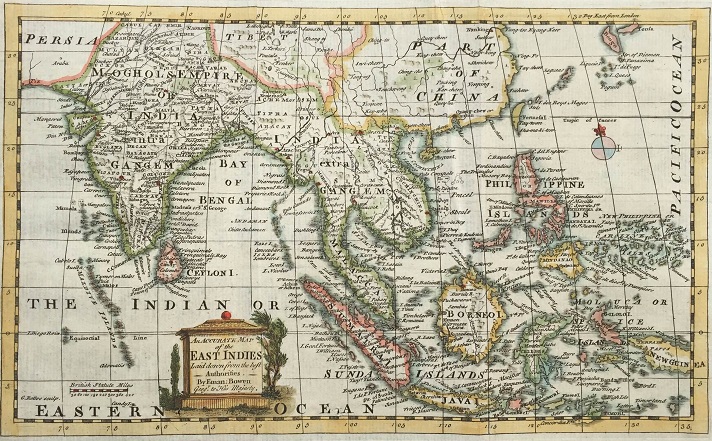
With the failure of that scheme George disappeared mostly into obscurity, and eventually found work as an army clerk. Eventually a charitable priest sponsored him to formally study theology, just as he had wanted to do in his youth. With this academic qualification, George was able to find work in London as a jobbing writer. For low wages he produced pamphlets to order and wrote entries for encyclopedias, the latest craze to sweep the city. It was in one of these (Emanuel Bowen’s Complete System of Geography) that he wrote an entry for Formosa and (anonymously) admitted to his own hoax. He also said that a full confession would be published after his death.
This late career led to some final brushes with fame. Jonathan Swift, for example, gave George a shoutout in the introduction to A Modest Proposal. Swift admitted that his satirical suggestion that the poor sell their children to the rich as food was inspired by “the famous Salamanaazor, a Native of the island of Formosa”. By far the most significant of George’s new acquaintances was a young man named Samuel Johnson, who even now people could see was tinged with greatness. Many years later Dr Johnson was asked who was the best man he had ever known, and he replied “Psalmanazar”.
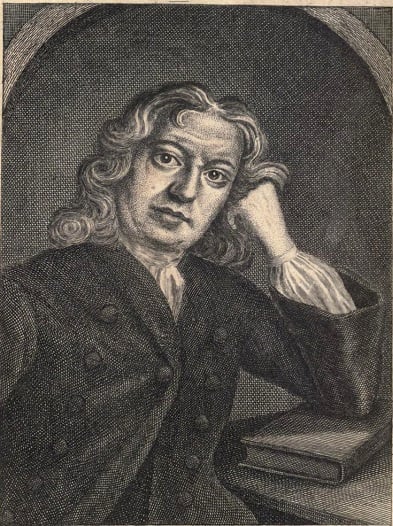
This might have been because George became a lot more religious as he grew older, prompted by a near-fatal illness in 1728. He grew to regret the hoax he had played as a young man, which was a large part of his motivation for writing his autobiography. Another more niche regret was in the introduction of his autobiography, where he apologised for telling people that the secret to avoiding ill effects from opium was to mix it with orange juice. George himself had a serious opium addiction throughout his entire life.
In his old age George lived on a pension paid for by his admirers, proof that in their eyes at least he had redeemed himself. He died in 1763, aged around 80 years old. To his death he refused to admit his year of birth of the name he had been born under, for fear of bringing shame to his family. His autobiography was published after his death, and though it answered many questions about his early life it still kept those key details secret. All we know him by is the name that he chose for the lie that he told: George Psalmanazar, the man who did not come from Formosa.
Images via wikimedia or taken from George’s book on Formosa except where stated.
[1] One nice detail in this chapter is that he mentions the Formosans keeping weasels instead of cats to prevent mice, and keeping frogs in their gardens to hunt insects.
